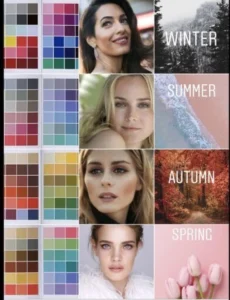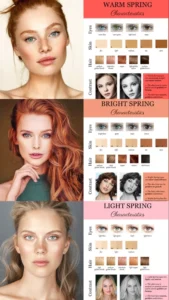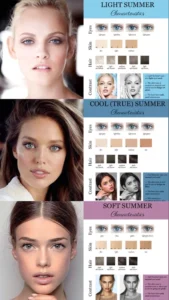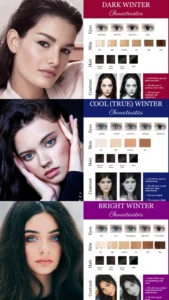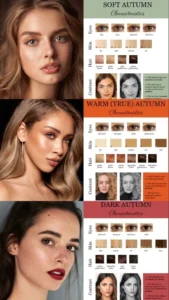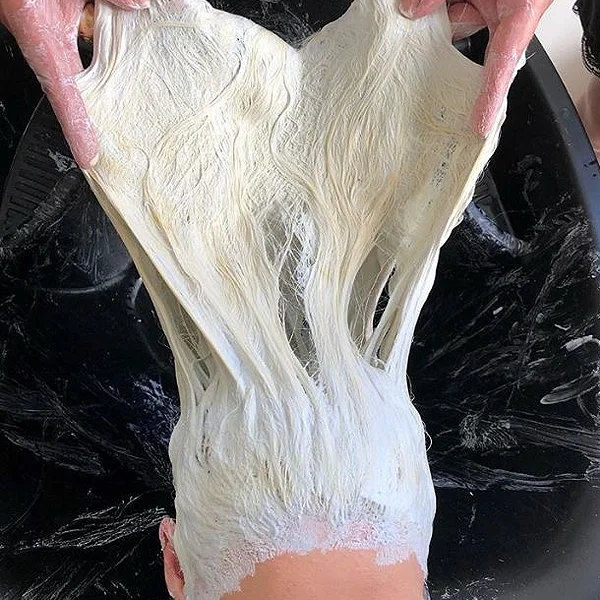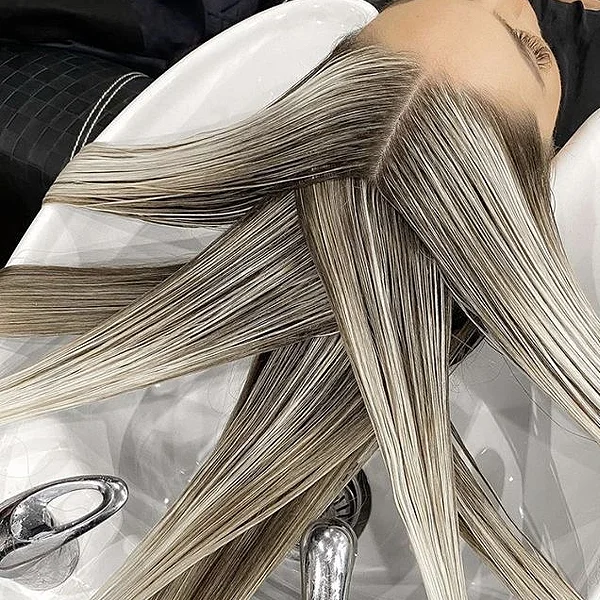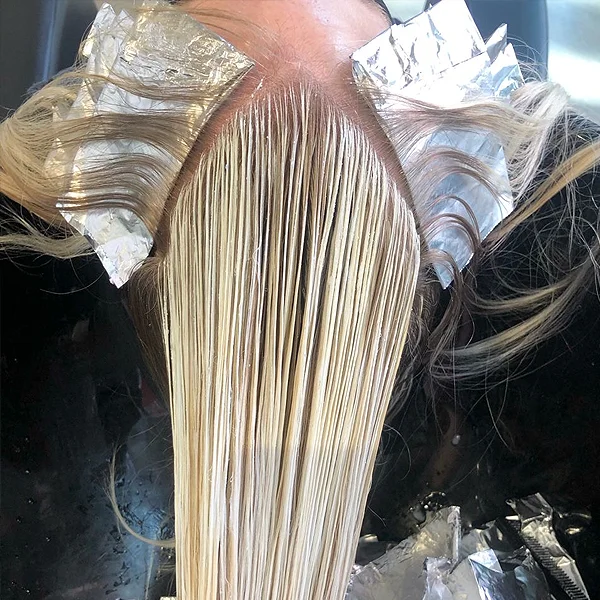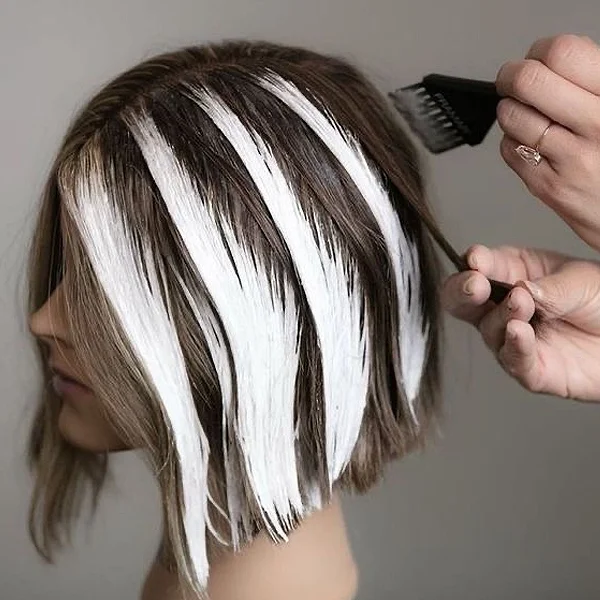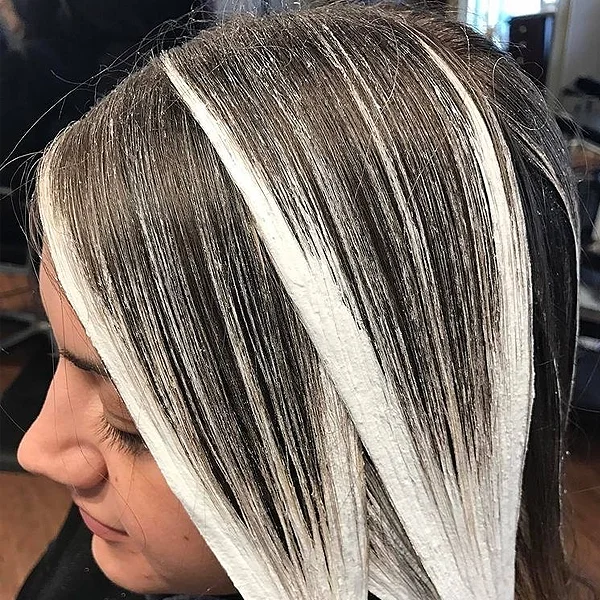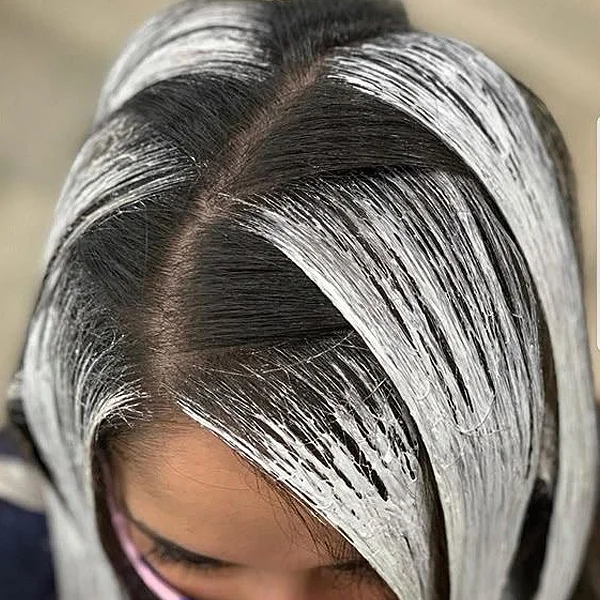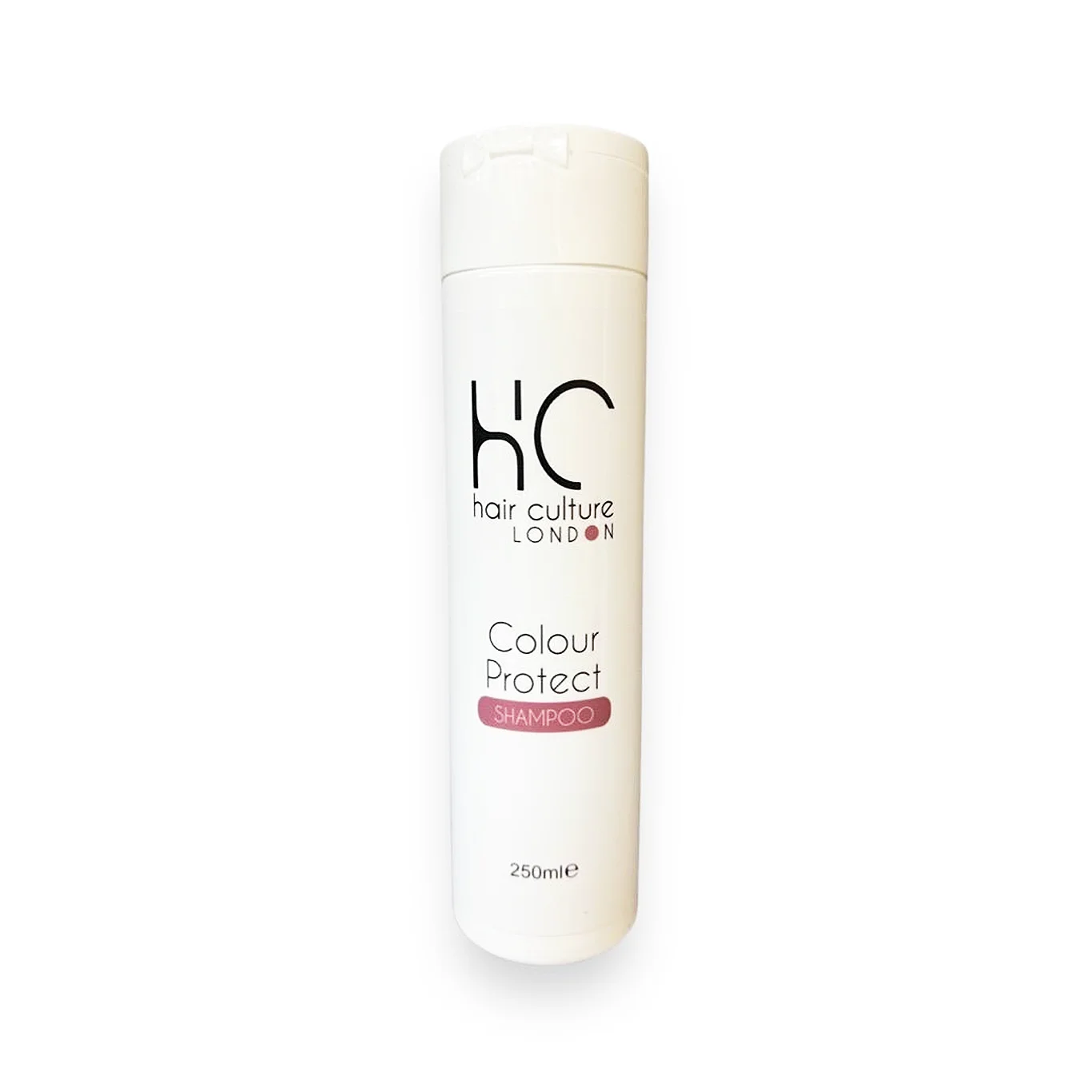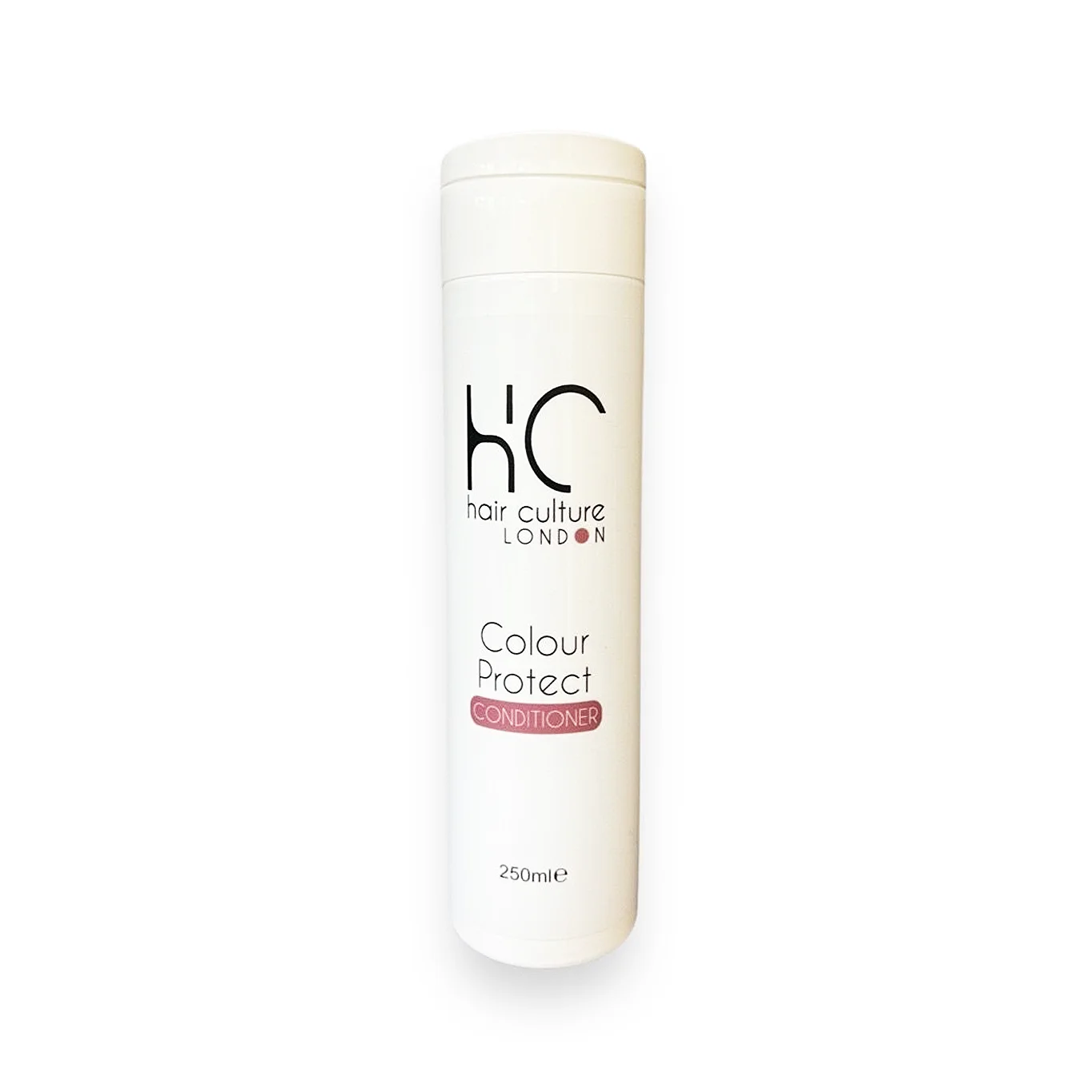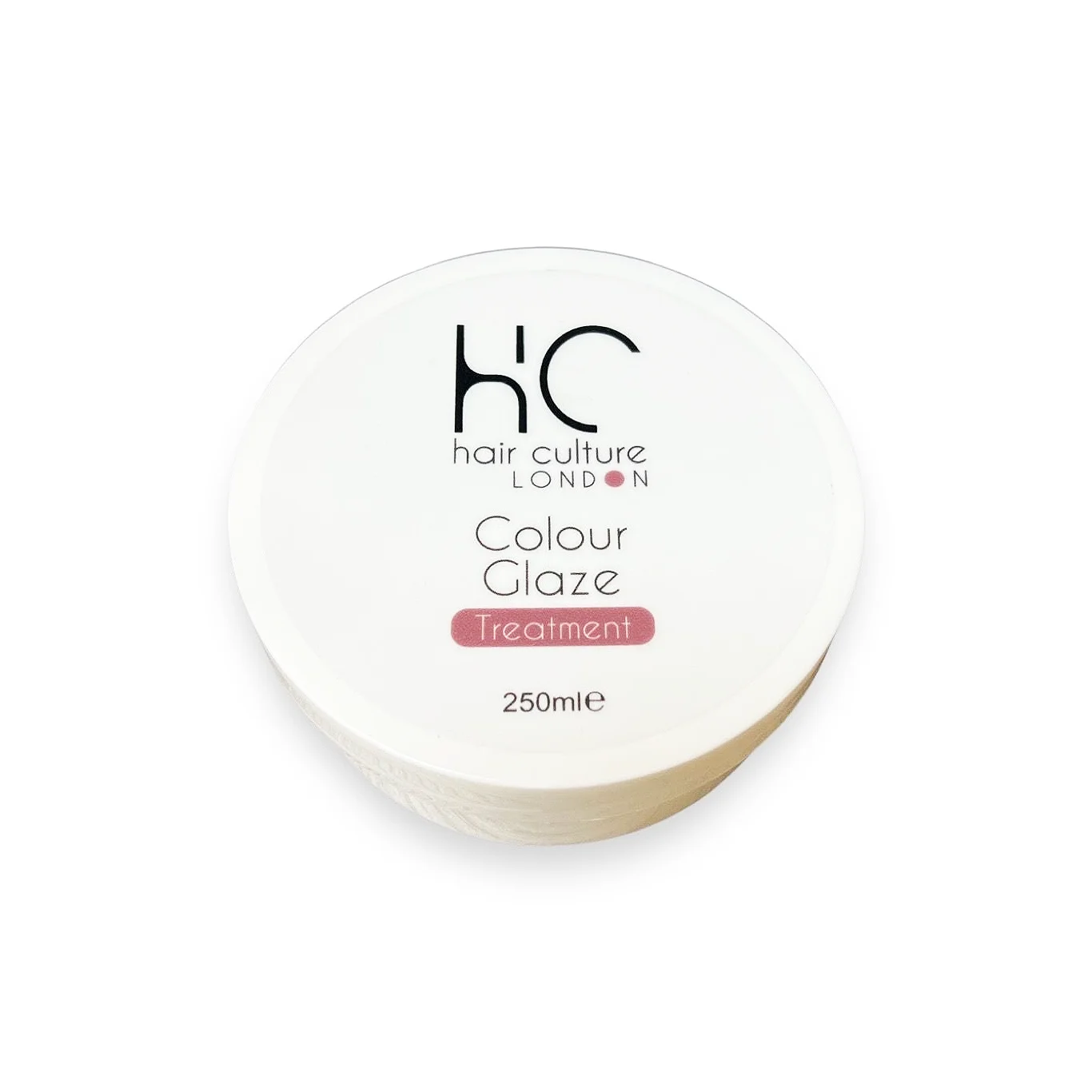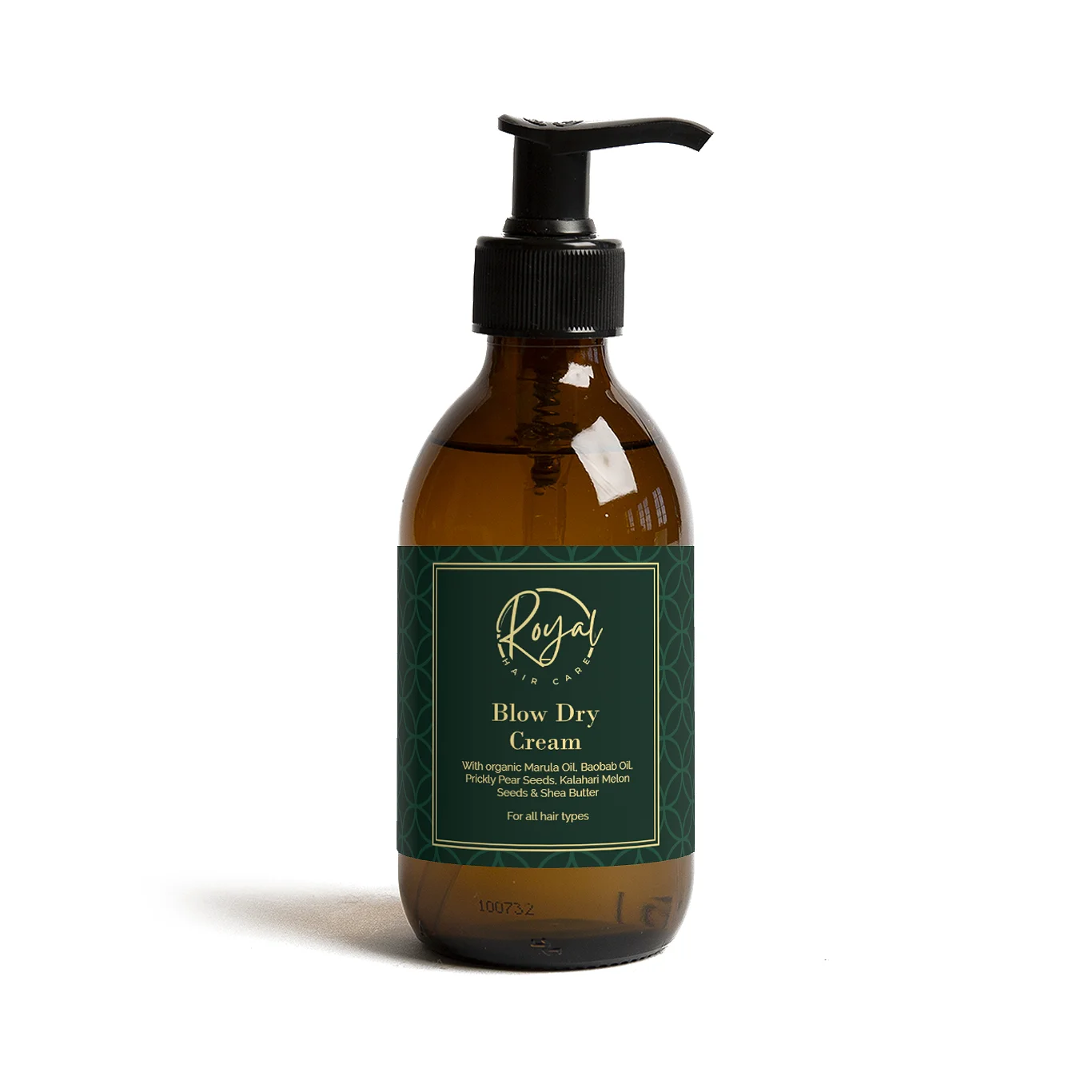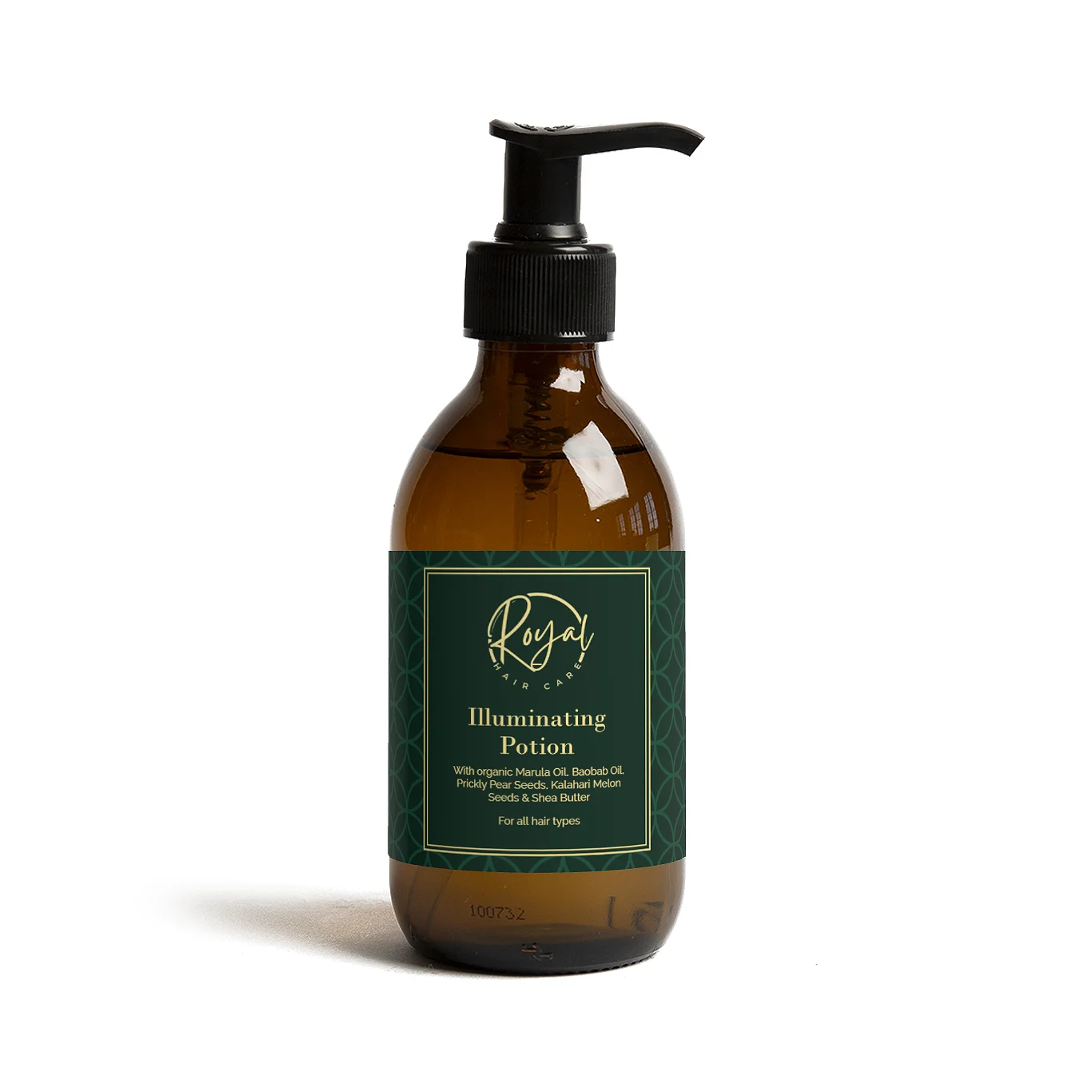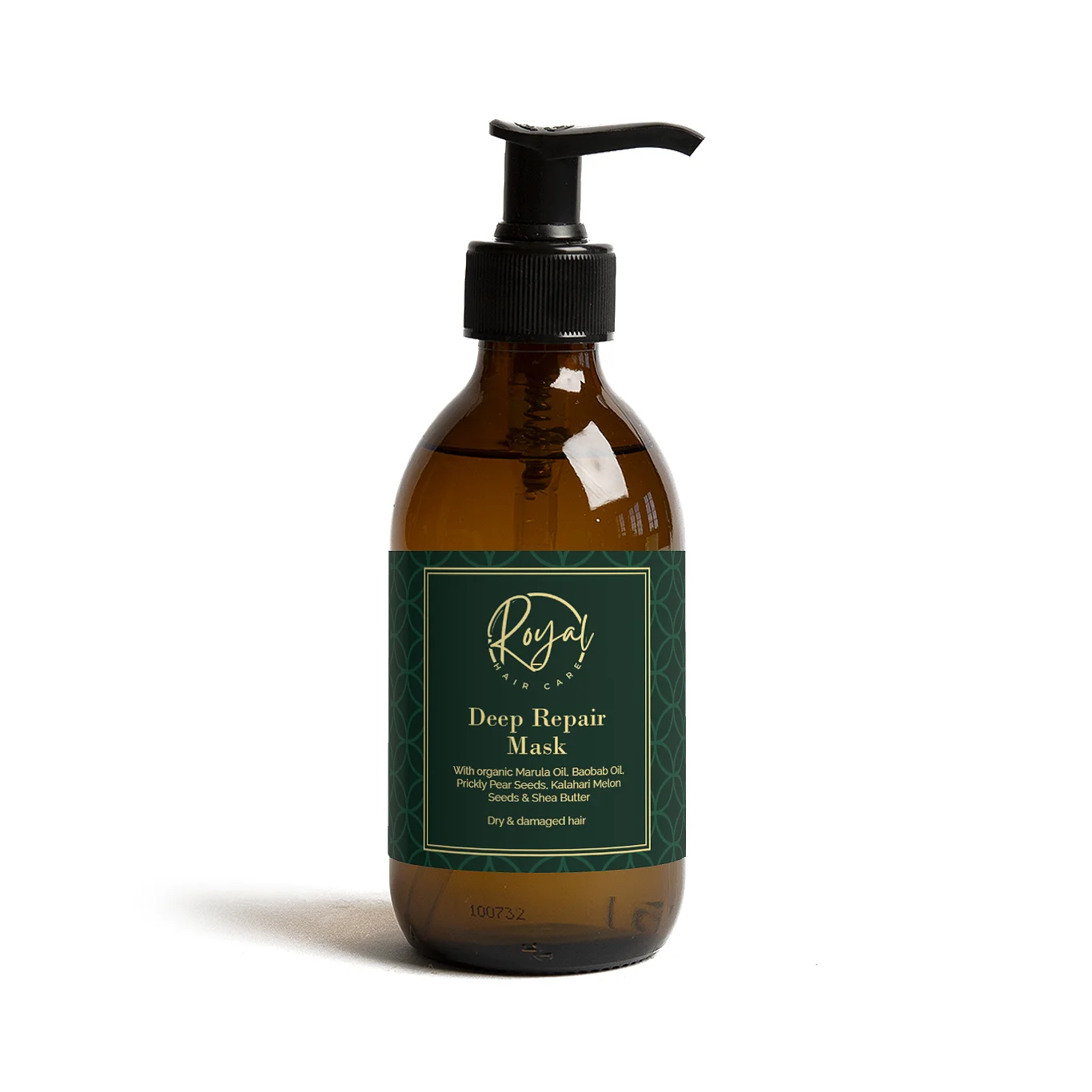Why Hair Colour Consultations Are Essential Before Your Appointment
The Foundation of a Successful Hair Colouring Experience
When it comes to hair colouring, a professional consultation is the foundation for achieving the best results. Whether you’re looking for a subtle refresh, a dramatic transformation, or a colour correction, a thorough consultation ensures that your hair goals align with what is realistically achievable. Skipping this step can lead to unexpected results, damage, or even costly corrections.
A consultation is more than just picking a colour—it’s an in-depth process where your stylist evaluates your hair’s condition, discusses your colour history, and helps determine the best technique for you. It’s also the perfect time to explore colour options that complement your skin tone, face shape, and lifestyle while ensuring your hair remains healthy throughout the process.
During this session, your stylist will also perform essential tests, such as strand and allergy tests, to check for sensitivities and predict how your hair will react to the dye. This step is crucial for avoiding allergic reactions and preventing unwanted surprises with colour development.
Additionally, consultation helps determine the cost of your service. Since factors like hair length, thickness, and previous colour treatments affect the process, an accurate price can only be given after a full assessment. Your stylist will also guide you on aftercare, ensuring you know how to maintain your colour for long-lasting vibrancy and health.
A hair colour consultation is essential to achieving the best results while protecting hair health. It helps set realistic expectations, prevent damage, and ensure a personalised approach to colouring.
This guide explores why hair colour consultations are essential before your appointment, covering everything from hair testing and colour selection to maintenance and pricing. By understanding the importance of this step, you can ensure a successful and satisfying hair colouring experience.
Below, you’ll find a breakdown of each section, allowing you to navigate directly to the information that is most relevant to you
What Happens During a Consultation
How a Consultation Shapes Your Colouring Plan
A hair colour consultation is the foundation for a successful transformation. It ensures that both you and your stylist are aligned on expectations, techniques, and aftercare. This step is crucial in preventing colour mishaps and achieving long-lasting, healthy results. A consultation allows for a thorough assessment of your hair’s condition, colour history, and desired outcome, ensuring the best approach is chosen before any dye is applied.
Assessing Hair History and Current Condition
Your stylist will start by examining your hair’s history—past colouring, chemical treatments, and overall health. Previous dyes, bleaching, or heat damage can affect how new colour develops, so understanding what’s been done before helps avoid surprises. A strand test may also be performed to see how your hair reacts to different colouring processes.
Discussing Your Colour Goals and Preferences
Choosing the right shade is about more than just picking a colour you like. Your stylist will discuss tones that complement your skin tone, eye colour, and personal style. They’ll also consider how much maintenance you’re willing to commit to—whether you prefer a low-maintenance balayage or a high-maintenance fashion colour that requires frequent touch-ups.
Determining the Best Colouring Technique
Once your goals are clear, your stylist will suggest the best method to achieve them. Whether it’s highlights, full coverage, colour correction, or subtle toning, this step ensures that the technique used suits your hair type and lifestyle. The consultation also allows your stylist to provide a realistic timeline and pricing estimate based on the complexity of the process.
A consultation allows the stylist to assess hair history, discuss goals, and determine the best colour approach. It helps avoid mistakes and ensures the right technique is used.
By taking the time for a professional consultation, you set the stage for a smooth, successful hair colouring experience that enhances your look while keeping your hair in its best condition.
The Role of a Specialist in Tailoring Your Colouring Experience
Why Expertise Matters
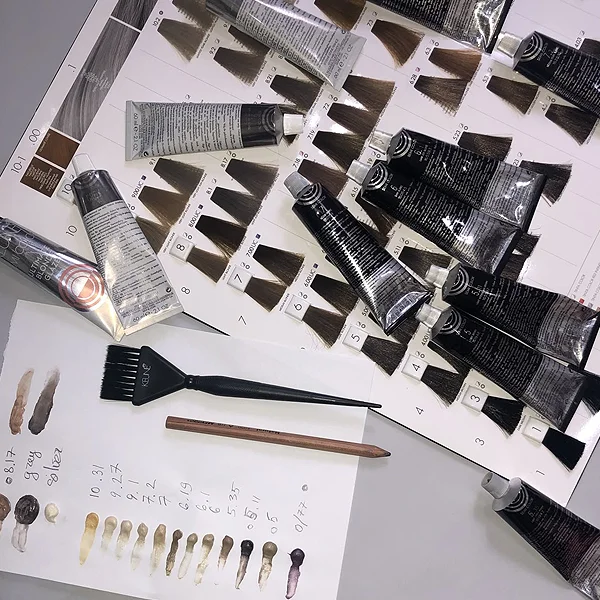
Hair colouring is not just about changing shades – it’s about creating a personalised look that complements your unique features, lifestyle, and hair type. A professional hair colour consultation with experienced colourists ensures that every aspect of your colouring process is carefully planned, from shade selection to aftercare. Our expertise allows us to customise every step, ensuring the best results while maintaining the health and integrity of your hair.
Expert Assessment for Individual Hair Needs
Every head of hair is different, and a one-size-fits-all approach simply doesn’t work. Our specialists take the time to assess your hair’s current condition, texture, and history before recommending the best course of action. Whether your hair is fine, thick, curly, or previously treated with chemicals, our knowledge allows us to adapt techniques to ensure the best possible outcome.
Personalised Colour Selection for the Perfect Match
Choosing the right colour isn’t just about preference—it’s about finding the shades that enhance your natural beauty. At Hair Culture London, our experts use colour theory to determine whether warm or cool tones suit your complexion best. We also consider lifestyle factors, ensuring your chosen shade fits your maintenance routine, whether you want a low-maintenance balayage or a high-impact, fashion-forward look.
Precision Techniques for the Best Results
From balayage to colour correction, highlights to full coverage, the right technique is just as important as the shade itself. Our specialists customise application methods to achieve seamless, natural-looking results while minimising damage. With years of expertise, we ensure that the colouring process enhances your hair’s condition rather than compromising it, leaving you with vibrant, healthy-looking locks.
A professional colourist ensures that hair colour suits individual features and remains healthy. Expertise is key to achieving seamless, vibrant results.
Professional hair colourists prioritise a tailored approach to hair colouring, ensuring that every client receives a personalised experience that leads to stunning, long-lasting results. Trusting a specialist means investing in expert knowledge, customised techniques, and a flawless finish that suits you perfectly.
The Importance of Hair Testing
Ensuring Vibrant, Long-Lasting Colour with Proper Hair Testing
Achieving the perfect hair colour starts with understanding how your hair will react to the colouring process. Hair testing is a crucial step that helps prevent unwanted surprises, protects hair health, and ensures the best possible results. Skipping this step can lead to uneven colour, excessive damage, or unexpected reactions. That’s why professional hair testing is an essential part of our consultation process.
Strand Testing: Predicting Colour Accuracy
A strand test involves applying a small amount of colour to a section of your hair to assess how it will develop. This test helps determine whether the desired shade can be achieved and if any adjustments need to be made to the formula. It also reveals how well your hair absorbs and retains colour, ensuring that your final result matches expectations.
Porosity and Elasticity Check: Protecting Hair Health
Hair porosity affects how dye penetrates the hair shaft, while elasticity determines how well the hair can handle chemical treatments. A professional test helps our specialists decide whether your hair needs additional treatments, such as deep conditioning or bond-building products like Olaplex, before colouring. This extra step prevents excessive breakage and ensures colour lasts longer.
Avoiding Damage and Uneven Results
Skipping hair testing can lead to unexpected colour results, patchiness, or excessive dryness. Testing allows our experts at Hair Culture London to adjust techniques, processing times, and product formulations to suit your hair’s specific needs. It’s a small but vital step that makes a significant difference in achieving vibrant, long-lasting, and healthy colour.
A strand test prevents colour surprises and ensures hair can handle the process. Hair porosity, elasticity, and colour reaction are tested.
At Hair Culture London, we prioritise hair testing to ensure every colouring experience is safe, effective, and tailored to your hair’s unique characteristics. A little preparation goes a long way in achieving flawless, healthy-looking hair colour.
Scalp Health Check
How Patch Testing Prevents Allergic Reactions and Sensitivity Issues
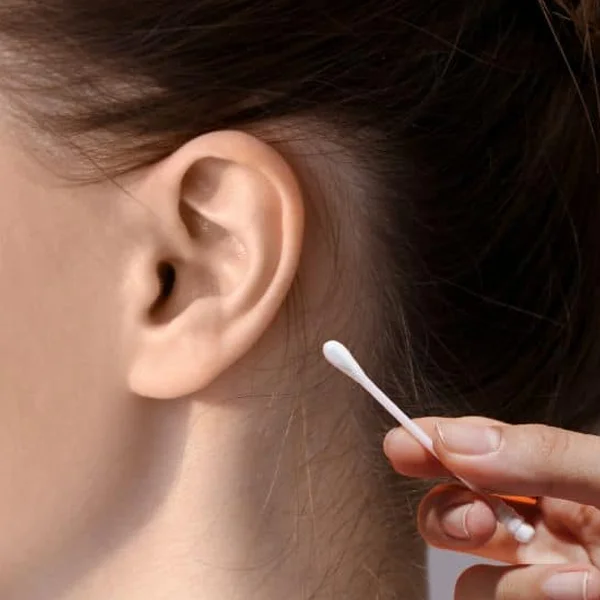
Healthy hair starts with a healthy scalp. A scalp check is a vital step in the hair colouring process, ensuring that your skin is in the right condition to handle chemical treatments safely. Ignoring scalp health can lead to discomfort, irritation, or even allergic reactions. That’s why we prioritise scalp assessments during our consultations to create the safest and most effective colouring experience.
Identifying Sensitivity and Allergies
A sensitive or irritated scalp can react negatively to hair dye, leading to itching, redness, or discomfort. Before colouring, our specialists check for any signs of dryness, inflammation, or pre-existing conditions such as psoriasis or dermatitis. If necessary, we recommend soothing treatments before proceeding with colour application to ensure a comfortable experience.
Preventing Adverse Reactions with a Patch Test
To minimise the risk of allergic reactions, we perform a patch test at least 48 hours before your colour appointment. This involves applying a small amount of dye to a discreet area of the skin, such as behind the ear or on the inner elbow. If no irritation occurs, it is safe to proceed. Even if you have previously coloured your hair, sensitivity can develop over time, making this step essential.
Optimising Scalp and Hair Health for Colour Longevity
A well-balanced scalp supports stronger, healthier hair, which in turn helps colour last longer. If your scalp is excessively dry or oily, it can impact how colour develops and how well it holds. Our experts at Hair Culture London offer tailored advice on scalp care, ensuring your hair remains vibrant and nourished long after your colouring session.
A healthy scalp is essential for safe and comfortable hair colouring. A pre-colour check prevents irritation and allergic reactions.
By addressing scalp health before applying colour, we help prevent complications and ensure a smooth, irritation-free colouring process. At Hair Culture London, we take every precaution to protect both your hair and your scalp, so you can enjoy beautiful results with complete confidence.
Why Hair Type Matters in Colouring
Finding the Best Colouring Method for Your Hair Type
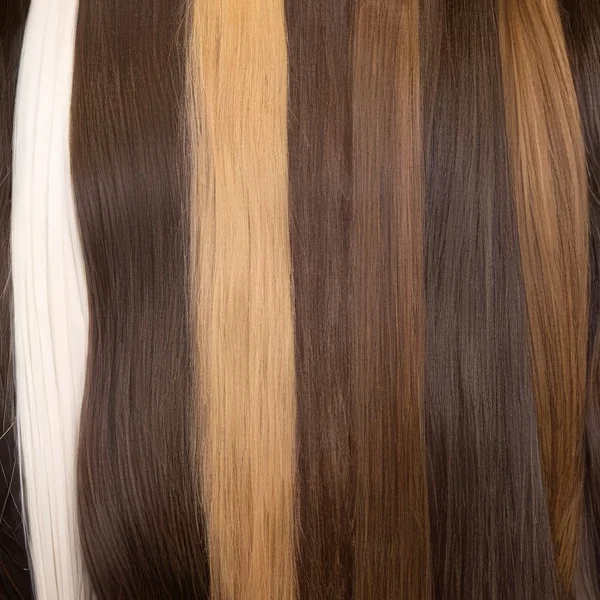
Hair type affects how colour is absorbed, retained, and reflected. Different textures, densities, and porosity levels influence the colouring process, making it essential to choose the right approach. A thorough assessment ensures the best results while keeping hair healthy and vibrant.
How Texture Affects Colour Absorption
Fine, medium, and coarse hair absorb colour differently. Fine hair tends to take colour quickly, sometimes appearing darker than expected, while coarse hair may be more resistant and require longer processing times. Understanding texture helps avoid uneven results and ensures an even, lasting colour.
The Role of Hair Porosity in Colour Retention
Porosity determines how well hair absorbs and holds onto dye. High-porosity hair, often due to previous chemical treatments or heat damage, can absorb colour quickly but also lose it faster. Low-porosity hair may resist colour, requiring specialised techniques to ensure even coverage. Identifying porosity levels before colouring allows for better product selection and application.
Choosing the Right Technique for Your Hair Type
Certain colouring methods work better for different hair types. Balayage and highlights blend seamlessly into wavy and curly hair, while all-over colour may suit straight hair for a sleek, uniform look. Tailoring the technique to the hair type prevents patchiness and enhances the final result.
Different hair types absorb and hold colour differently. Hair texture, porosity, and previous treatments affect the final result.
Properly assessing hair type before colouring helps achieve the desired shade while maintaining hair health. A personalised approach ensures colour lasts longer, looks natural, and stays vibrant.
Matching Techniques to Hair Type
Why Certain Methods Work Better on Specific Hair Types
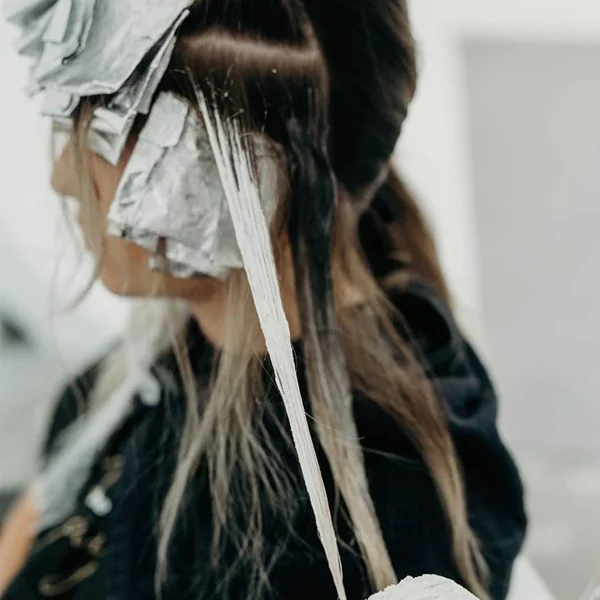
Hair colouring is not a one-size-fits-all process. The technique used should complement the hair’s natural texture, density, and condition to achieve the best results. Choosing the wrong method can lead to uneven colour, premature fading, or excessive maintenance. A personalised approach ensures that the colour blends seamlessly and enhances the hair’s natural beauty.
Balayage and Highlights for Natural Dimension
Balayage and highlights work well on wavy and curly hair, as the hand-painted technique allows colour to blend naturally with movement. These methods create depth and dimension without harsh lines, making them ideal for those looking for a softer, low-maintenance result. On straight hair, precise placement is key to achieving a seamless blend without streaks.
Full Coverage for a Bold, Uniform Look
Solid hair colouring is best suited for those looking for complete transformation or grey coverage. Fine hair tends to absorb colour more quickly, often appearing darker than intended, so lighter formulations may be needed. Coarse hair, on the other hand, may require extended processing times or stronger developers to achieve full saturation.
Colour Melting and Root Shadowing for a Blended Finish
For hair types prone to visible regrowth, techniques like colour melting or root shadowing help blend new growth with the rest of the hair. These techniques work well for medium to thick hair, where natural depth allows for smooth transitions. They are particularly beneficial for those wanting a longer-lasting, lived-in look with minimal upkeep.
Choosing the right colouring technique prevents harsh regrowth lines and enhances hair texture.
Selecting the right technique based on hair type ensures that the colour enhances natural texture and lasts longer without unnecessary damage. Customising the process makes a significant difference in achieving a polished, effortless result.
The Science of Cool and Warm Tones
How Skin Undertones Determine the Best Hair Colour
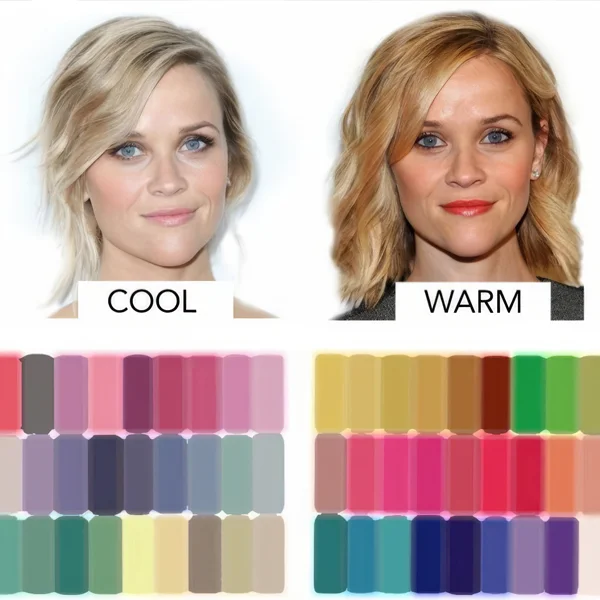
Choosing the right hair colour isn’t just about personal preference—it’s about understanding how different tones interact with skin undertones to create a flattering look. The science behind warm and cool tones helps determine which shades enhance natural features and which may appear unnatural. A well-matched tone can brighten the complexion, while the wrong one can make skin look washed out or dull.
How Skin Undertones Influence Hair Colour
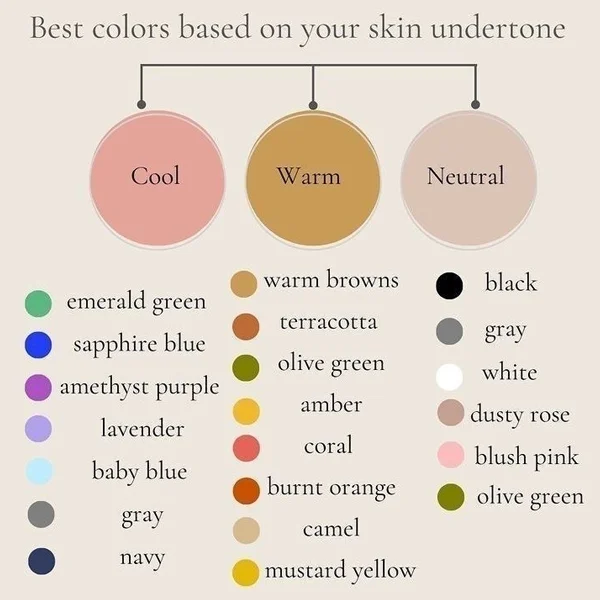
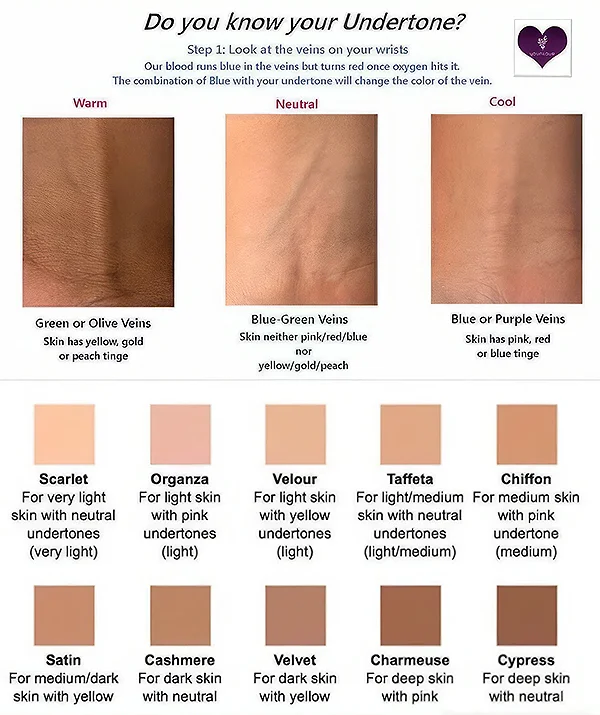
Skin undertones fall into three main categories: warm, cool, and neutral. Warm undertones have golden or peachy hues, while cool undertones lean towards pink, red, or blue. Neutral undertones have a balance of both. Determining the right undertone helps in selecting a hair colour that harmonises with skin, creating a natural and radiant effect.
The Metal Test – Determining Your Undertone
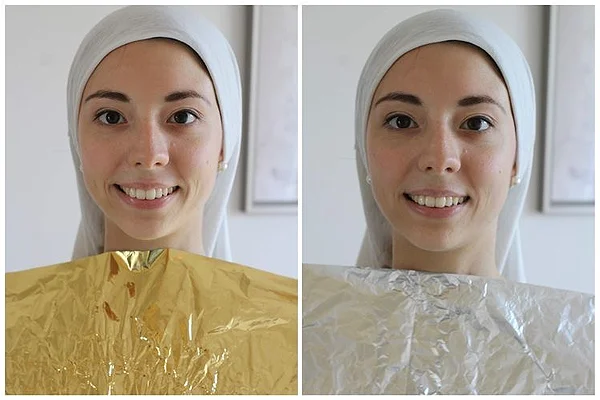
Understanding whether you have warm, cool, or neutral undertones is crucial for selecting the most flattering hair colour. The metal test is a quick and effective way to determine your undertone:
Neutral-Warm or Neutral-Cool Undertone
If one metal looks slightly better than the other but both still work, your undertone is slightly shifted towards warm or cool but remains balanced enough to experiment with both colour palettes.
Cool Undertone
If silver jewellery complements your skin better than gold, your undertone is cool. Cool-toned hair colours like ash blondes, platinum, icy brunettes, and deep espresso shades will suit you best.
Warm Undertone
If gold jewellery enhances your complexion more than silver, you have a warm undertone. Warm shades like golden blondes, honey browns, coppers, and rich auburns work well for you.
Neutral Undertone
If both silver and gold jewellery look equally good on you, your undertone is neutral. You can wear a mix of warm and cool hair colours depending on your preference.
Understanding Warm and Cool Hair Colours
Warm hair colours include golden blondes, copper reds, and caramel browns. These shades add richness and warmth, complementing skin with golden undertones. Cool hair colours, such as ash blonde, platinum, or espresso brown, contain blue or violet undertones that neutralise warmth and suit cooler skin tones.
Customising the Perfect Shade for Each Individual
A personalised approach ensures that hair colour works with skin tone rather than against it. Adjusting the warmth or coolness of a shade helps create balance and enhances natural beauty. For those with neutral undertones, both warm and cool shades can work, depending on the overall look they want to achieve.
Hair colour should complement skin tone to create a balanced look. The right tone enhances features, while the wrong one can appear unnatural.
Matching hair colour to the right undertone ensures a harmonious, flattering result that enhances features and brings out the best in the overall complexion. Understanding this science allows for informed decisions that lead to long-lasting, beautiful colour.
Customised Colour Selection
Selecting the Perfect Hair Colour for Your Unique Features
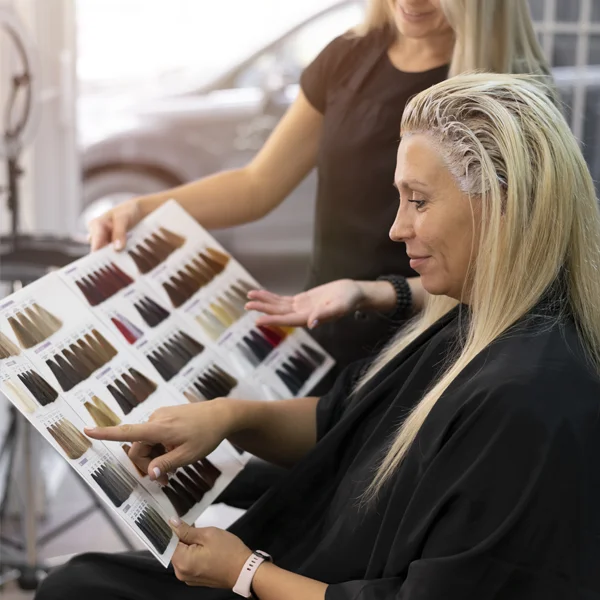
Hair colouring is not just about picking a shade—it’s about finding the perfect colour that enhances natural features, complements skin tone, and suits individual style. A tailored approach ensures that the final result looks natural, vibrant, and well-balanced. Customised colour selection takes into account factors such as lifestyle, maintenance preferences, and long-term hair goals.
Finding the Right Shade for Skin Tone and Eye Colour
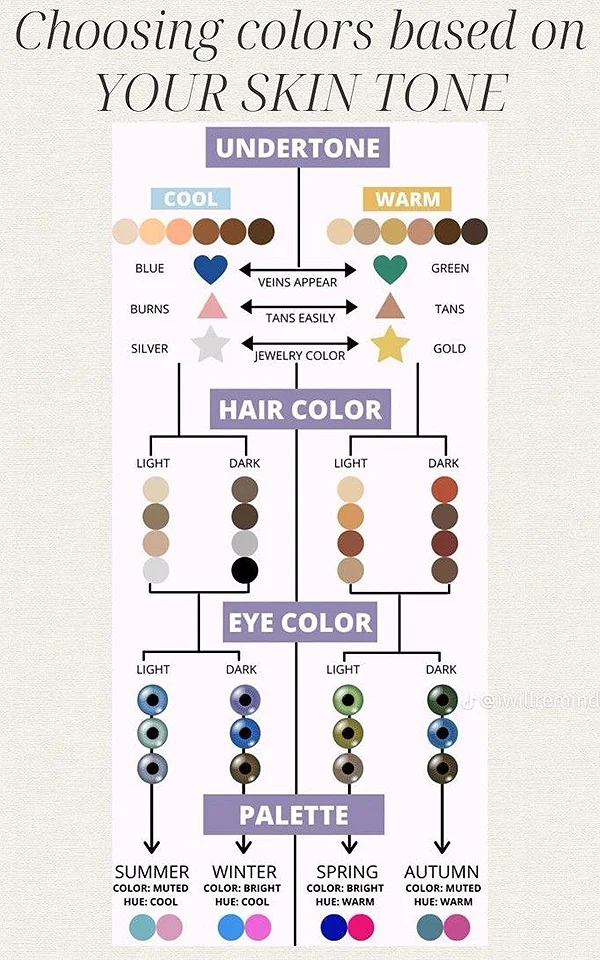
Selecting a hair colour that matches skin tone and eye colour creates a harmonious look. Warm complexions pair well with golden blondes, rich browns, and warm reds, while cool-toned skin suits ash blondes, platinum shades, and deep espresso tones. Eye colour also plays a role—warmer shades enhance green and hazel eyes, while cooler hues bring out the depth in blue or grey eyes.
Hair Colour Selection Based on the Four Seasons
Your natural hair, eye colour, and skin undertones determine which seasonal colour palette suits you best. This system categorises individuals into four groups
Warm Seasons: Spring & Autumn
Spring
- Hair: Light blonde to warm golden brown
- Eyes: Light blue, green, hazel with a golden hue
- Skin Tone: Warm, peachy, golden, or ivory with a soft radiance
- Best Hair Colours: Warm golden blonde, honey blonde, caramel brown, strawberry blonde
- Avoid: Ashy tones that wash out the warmth of the complexion
Autumn
- Hair: Rich brunette, deep auburn, warm golden brown
- Eyes: Dark brown, green, deep hazel
- Skin Tone: Warm, golden, olive, or deep bronze
- Best Hair Colours: Copper, chestnut brown, rich chocolate, warm espresso, deep auburn
- Avoid: Platinum or overly cool ash tones that create contrast and dullness
Cool Seasons: Summer & Winter
Summer
- Hair: Soft brown, ash blonde, muted sandy tones
- Eyes: Blue, grey, soft green
- Skin Tone: Cool pink or neutral beige with a soft, delicate complexion
- Best Hair Colours: Ash blonde, platinum, beige blonde, soft brown, cool caramel
- Avoid: Overly warm tones like copper or golden blondes that can look unnatural
Winter
- Hair: Dark brown to jet black with cool undertones
- Eyes: Deep blue, icy green, dark brown with high contrast
- Skin Tone: Cool, fair with a blue undertone or deep with a cool richness
- Best Hair Colours: Icy platinum, espresso, jet black, deep burgundy, blue-based reds
- Avoid: Warm, golden, or honey-based shades that can clash with the natural contrast
By aligning hair colour with seasonal tones, the result appears more natural and enhances features rather than working against them.
How Face Shape Influences Hair Colour and Haircuts
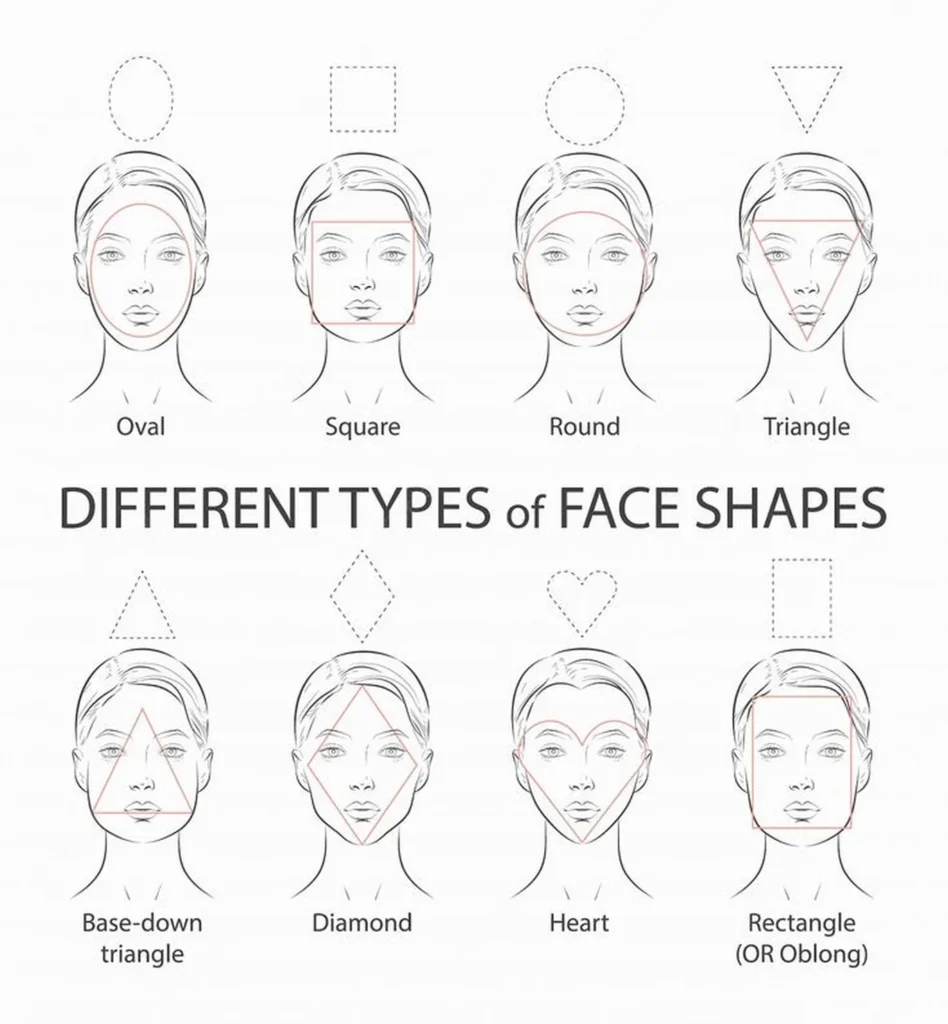
Face shape plays a key role in determining which haircut and colouring techniques will be the most flattering. Certain haircuts can enhance symmetry, while strategic colour placement can highlight or soften specific features.
Matching Haircuts and Colours to Face Shape
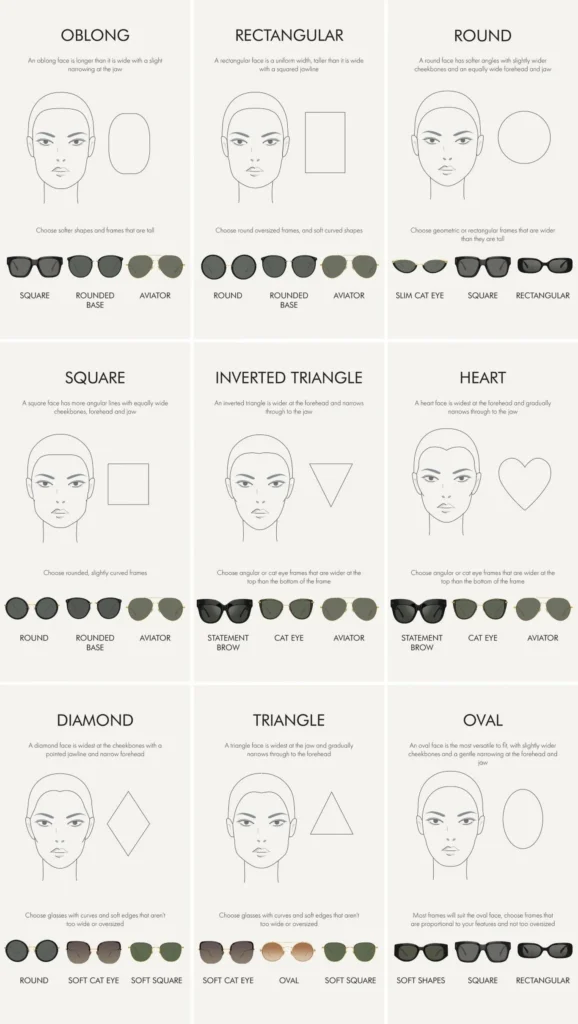
Oval Face Shape
The Most Versatile
An oval-shaped face suits almost any hairstyle and hair colour technique. The balanced proportions allow for short bobs, long waves, or layered cuts. Soft balayage, highlights, or full-colour transformations all work well.
Best Haircuts:
✔ Long layers, bobs, pixie cuts, curtain bangs
✔ Middle or side parts
Best Colour Techniques:
✔ Balayage, ombré, face-framing highlights
✔ Both warm and cool tones complement oval faces depending on undertone
Round Face Shape
Creating Definition
For round faces, haircuts and colours should create the illusion of length and structure. Layers, volume, and darker roots help elongate the face. Avoid placing overly bright highlights around the cheeks, as they can make the face appear wider.
Best Haircuts:
✔ Long layers with volume at the crown
✔ Angled bobs or side-swept bangs
Best Colour Techniques:
✔ Root smudge or shadowing to add depth
✔ Subtle highlights that elongate rather than widen the face
Square Face Shape
Softening Angles
A square face has strong, defined jawlines. Soft, blended colours and layers help break up harsh lines, while waves and movement create a more balanced look.
Best Haircuts:
✔ Soft, long layers
✔ Side-swept bangs to soften the jawline
Best Colour Techniques:
✔ Warm balayage or blended highlights to add dimension
✔ Avoid sharp colour contrasts, which can emphasise strong angles
Heart Face Shape
Balancing the Forehead and Jawline
A heart-shaped face features a wider forehead that tapers into a more defined jawline and chin. The goal is to add volume around the lower part of the face to balance proportions.
Best Haircuts:
✔ Long layers or shoulder-length styles with waves
✔ Side parts and face-framing layers
Best Colour Techniques:
✔ Lighter ends or balayage to add width at the jawline
✔ Avoid extreme highlights at the forehead, as they can exaggerate its width
Oblong and Rectangular Face Shapes
Adding Softness and Width
Longer face shapes benefit from layers, soft curls, and colour techniques that add width rather than length. A middle part can make the face appear even longer, so side parts are often more flattering.
Best Haircuts:
✔ Shoulder-length or shorter styles with volume
✔ Soft curls or waves to create width
Best Colour Techniques:
✔ Lighter face-framing highlights at the jawline to add balance
✔ Avoid dark roots with no highlights, as they can elongate the face further
Considering Lifestyle and Maintenance Preferences
Low-maintenance options like balayage and root melts work well for those who prefer fewer salon visits, while full-colour transformations require more frequent touch-ups. Lighter shades often demand more upkeep, while darker tones can grow out more naturally. Choosing a colour that fits daily routine and styling habits ensures long-term satisfaction.
Adjusting Shades for a Natural and Flattering Look
Subtle variations in shade can make a dramatic difference in how natural the colour appears. Slightly adjusting the warmth or depth of a tone ensures that the colour blends seamlessly with the natural hair base. Hair texture also influences colour perception—curls and waves diffuse colour differently than straight hair, making placement and tone adjustment essential for the best outcome.
A personalised approach ensures colour suits individual preferences, lifestyle, and maintenance routine.
A well-chosen hair colour should feel effortless and enhance personal style while maintaining hair health. With a customised approach, colour is not just applied—it is carefully crafted to suit the individual.
A Personalised Approach to Haircuts and Colour
When choosing a hair colour and cut, individual features, lifestyle, and personal style all play a role. A professional consultation ensures that the right technique is chosen to complement natural beauty while maintaining hair health. At Hair Culture London, our experts analyse both face shape and colour undertones to create the most flattering look for every client.
Ask your hair colour specialist to do the same – ensuring that your chosen shade and style work together to enhance your natural features and suit your everyday needs.
Why Accurate Pricing Requires a Consultation
How Hair Length, Thickness, and Condition Influence Pricing

The cost of hair colouring varies based on multiple factors, making it impossible to provide an exact price without an in-person consultation. Hair length, thickness, current condition, and the complexity of the colouring technique all influence the final price. A colouring consultation ensures that pricing is transparent, realistic, and tailored to the specific needs of each client.
Factors That Affect the Cost of Colouring
Hair length and density significantly impact the amount of product and time required for the service. Longer or thicker hair requires more colour, processing time, and effort compared to shorter or finer hair. Additionally, previous colour treatments, such as box dyes or past bleaching, may require extra steps like colour removal or correction, increasing the service time and cost.
Customised Colouring Techniques and Their Pricing Differences
Different techniques, such as balayage, full-head colour, highlights, and colour correction, require varying levels of skill and time. A simple root touch-up will cost less than a full transformation or corrective colouring process. Premium products, like ammonia-free dyes or bond-building treatments, can also affect the final price but provide better results and long-term hair health.
Ensuring Transparency and Avoiding Unexpected Costs
A hair consultation allows for an accurate price estimate based on hair assessment and chosen technique. It ensures there are no surprises on the day of the appointment, as clients receive a clear breakdown of costs before proceeding. This step helps align expectations, prevent misunderstandings, and provide a personalised plan that fits both hair goals and budget.
Hair colour costs vary based on hair length, thickness, and technique. An in-person consultation ensures accurate pricing.
An in-depth consultation is essential for setting fair and accurate pricing, ensuring that clients receive the best service for their investment while achieving their desired hair transformation.
Overview of Colouring Techniques
Understanding the Differences Between Hair Colouring Techniques
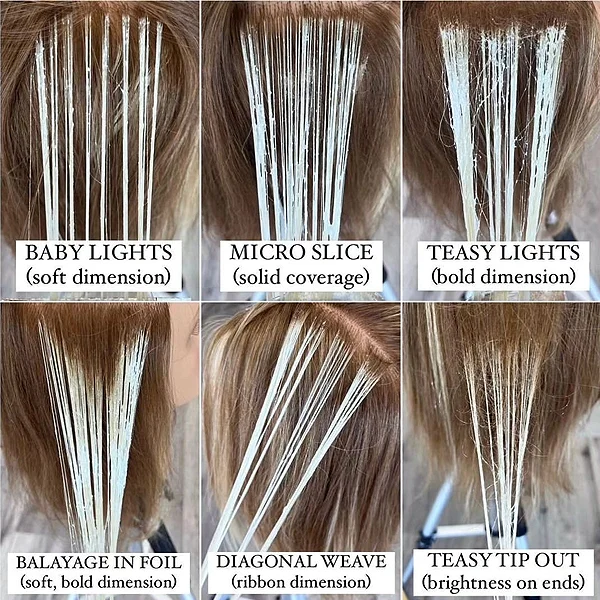
Hair colouring offers endless possibilities, but choosing the right technique is key to achieving the desired result. Each method provides a different effect, from subtle dimension to bold transformations. Understanding the differences helps in selecting the best approach based on hair type, maintenance level, and personal style.
Balayage, Highlights, and Lowlights for Dimension
Balayage is a freehand painting technique that creates a soft, natural look with blended colour. Highlights use foils to lighten sections of hair for contrast, while lowlights add depth by darkening certain areas. These techniques are ideal for those looking to enhance movement and brightness with a more low-maintenance regrowth.
Full Colour, Root Touch-Ups, and Grey Coverage
For those wanting a complete transformation, full-head colouring provides a solid, uniform shade. Root touch-ups maintain the consistency of a previous colour, while grey coverage ensures even pigmentation for a youthful appearance. These techniques require regular upkeep but deliver a polished and refined look.
Colour Corrections and Creative Colouring
Colour correction is necessary when fixing uneven tones, removing unwanted shades, or transitioning from dark to light. This complex process often requires multiple sessions to protect hair health. Creative colouring involves bold hues like pastels or vivid shades, requiring pre-lightening and specialised aftercare to maintain vibrancy.
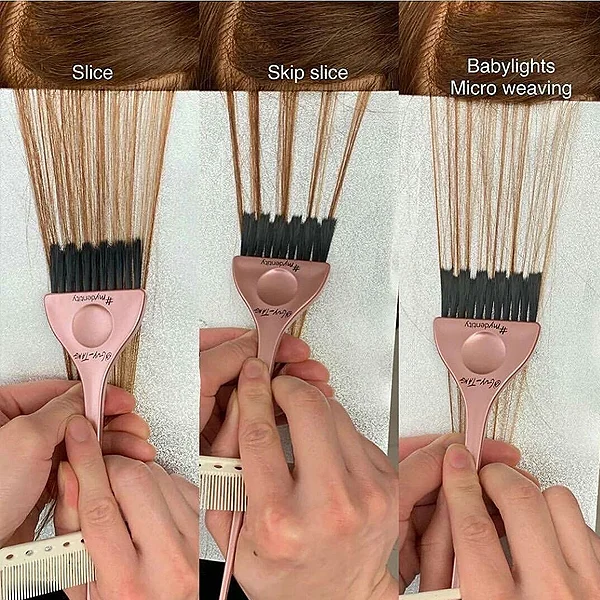
Each technique creates a different effect. The right choice depends on the desired look and maintenance commitment.
Choosing the right technique ensures a personalised result that enhances natural beauty while considering long-term maintenance and hair health. Consulting with a professional helps determine the best method for achieving the perfect colour.
Matching Method to Lifestyle and Hair Goals
Finding the Right Colouring Technique
Hair colouring is not just about achieving the perfect shade—it’s also about choosing a method that fits seamlessly into your lifestyle and maintenance routine. Some colouring techniques require frequent touch-ups, while others grow out naturally, allowing for lower upkeep. Understanding how different methods align with individual hair goals ensures long-lasting satisfaction without unnecessary maintenance.
Low-Maintenance Colour for a Natural Look
For those with busy schedules or minimal styling routines, techniques like balayage, root smudging, and soft highlights offer a low-maintenance option. These styles blend seamlessly with natural hair growth, reducing the need for frequent salon visits while still adding depth and brightness.
High-Impact Colour for Statement Styles
Vibrant, bold shades and all-over colour transformations require more commitment. Fashion colours such as pastels, reds, and platinum blondes need regular touch-ups to maintain their vibrancy. Root regrowth is more noticeable with full-head colour, meaning salon visits will be more frequent to keep the look fresh.
Balancing Colour Longevity with Hair Health
Choosing a technique that works with natural hair texture and condition helps maintain long-term hair health. Gradual lightening, blended tones, and tailored treatments prevent excessive damage while achieving the desired colour result. A professional consultation helps find the best balance between style, maintenance, and hair integrity.
Hair colour should match lifestyle needs and maintenance preferences. Some methods require frequent touch-ups, while others grow out naturally.
By selecting a colouring method that fits lifestyle needs and hair care habits, it’s possible to enjoy beautiful colour without unnecessary upkeep. A personalised approach ensures a look that remains fresh and flattering for longer.
Importance of Post-Colour Care
How to Preserve Colour and Keep Hair Healthy After Dyeing
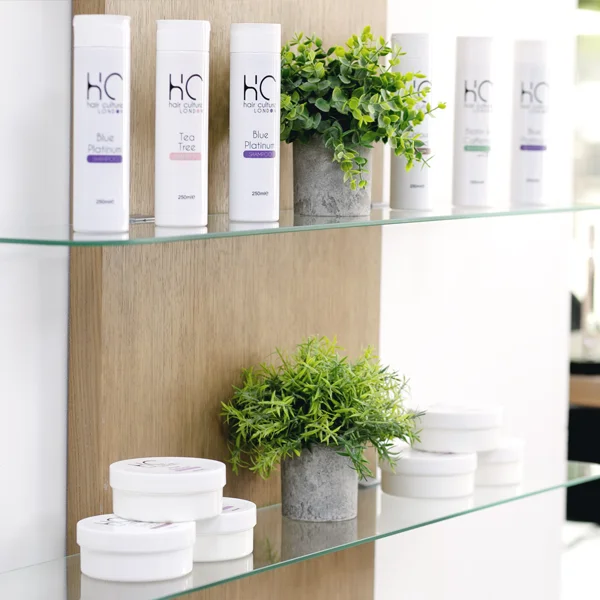
Maintaining vibrant, healthy hair after colouring requires the right care routine. Without proper aftercare, colour can fade quickly, and hair can become dry or damaged. A well-planned regimen helps preserve colour longevity, prevents unnecessary fading, and keeps hair in its best condition.
Using the Right Products for Colour Protection
Colour-treated hair needs sulphate-free shampoos and conditioners designed to lock in colour and prevent fading. Hydrating masks and leave-in treatments provide essential moisture, keeping hair soft and preventing dryness caused by chemical processing. Professional products tailored to coloured hair ensure that the shade stays rich and vibrant for longer.
Minimising Heat and Environmental Damage
Excessive heat styling and sun exposure can cause colour to fade faster. Using heat protectants before blow-drying or styling with hot tools helps shield hair from damage. Wearing a hat or using UV-protectant hair products prevents sun-induced fading, especially for lighter shades and fashion colours.
Scheduling Maintenance Appointments
Regular salon visits for toning, gloss treatments, or root touch-ups keep colour looking fresh. Certain shades, such as blondes and reds, require more frequent maintenance, while blended techniques like balayage allow for more extended regrowth periods. A personalised maintenance plan ensures hair remains vibrant and healthy between appointments.
Proper aftercare extends colour longevity and maintains hair health. The right products and habits prevent premature fading.
Caring for coloured hair doesn’t stop at the salon. A professional hair colouring aftercare routine makes all the difference in maintaining colour intensity, hair strength, and overall shine. Investing in the right care prolongs results and keeps hair looking its best.
Maintenance Appointments and Long-Term Care
Personalised Hair Care Plans for Long-Lasting Colour
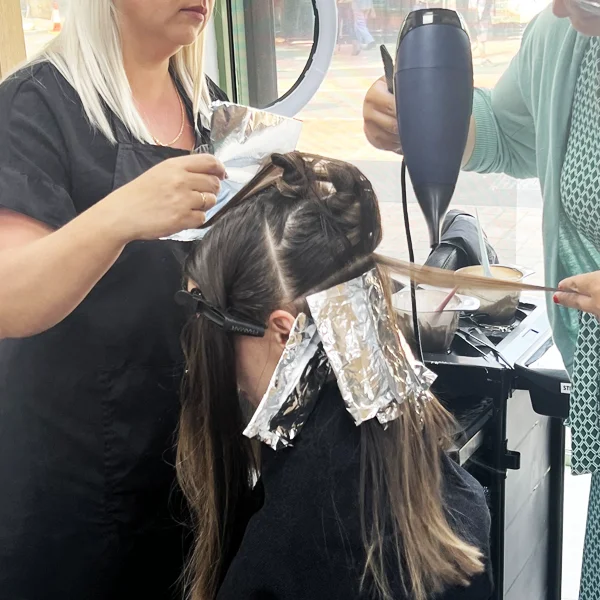
Keeping hair colour fresh and vibrant requires regular maintenance and the right care routine. Over time, hair colour can fade, roots grow out, and tones shift due to washing, heat styling, and environmental factors. Scheduling maintenance appointments and following a long-term care plan ensures that coloured hair stays healthy, glossy, and beautifully maintained.
The Importance of Regular Salon Visits
Even the best hair colour requires upkeep. Root touch-ups, gloss treatments, and toner applications help maintain colour vibrancy and prevent uneven fading. The frequency of salon visits depends on the colouring technique—full-head colour and grey coverage may need touch-ups every 4-6 weeks, while balayage or highlights can last longer between appointments.
Protecting Colour Between Appointments
Using the right at-home products is essential for maintaining colour longevity. Colour-safe shampoos and conditioners prevent fading, while deep conditioning treatments restore moisture lost during the colouring process. Heat protectants and UV shields help prevent damage from styling tools and sun exposure, preserving the hair’s colour and condition.
Customising a Long-Term Hair Care Plan
Each client’s maintenance routine is tailored based on hair type, colour choice, and lifestyle. Some may need regular gloss treatments to keep their colour fresh, while others benefit from deep-conditioning treatments to maintain hair strength. A personalised approach ensures that coloured hair remains vibrant, soft, and healthy in the long run.
Regular touch-ups and professional treatments keep hair colour fresh and prevent fading.
Long-term colour care is just as important as the initial colouring process. By committing to regular maintenance and using the right products, coloured hair stays flawless and full of life for weeks after each salon visit.
Maintaining the vibrancy and health of your coloured hair requires dedicated care and the right products.
Our specialists at Hair Culture London recommend the following long-term colour care products, each designed to protect and enhance your hair’s colour and integrity
Incorporating these products into your hair care routine will help maintain the vibrancy of your colour and the health of your hair. For more information or to purchase, visit our online shop.
Avoiding Common Pitfalls with Proper Consultations
Why Rushing into Hair Colouring Can Lead to Unwanted Results
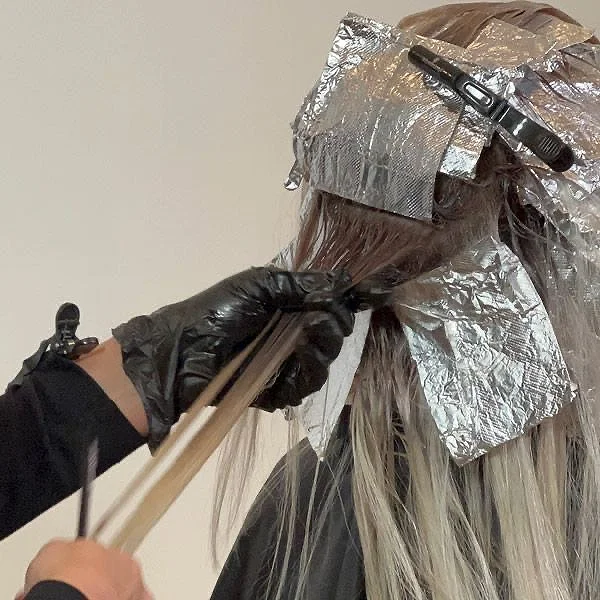
Skipping or rushing through a hair colour consultation can lead to unsatisfactory results, unexpected costs, and even long-term hair damage. A thorough consultation ensures that the right colour, technique, and aftercare plan are chosen based on hair type, condition, and personal preferences. Identifying potential challenges before applying colour helps avoid common mistakes that can be difficult to fix later.
Preventing Colour Mismatches and Unwanted Tones
One of the biggest issues people face when colouring their hair is ending up with a shade that doesn’t suit them. Without a proper consultation, factors like skin undertone, hair porosity, and natural pigment can be overlooked, resulting in brassy, overly dark, or washed-out tones. A professional colourist will assess these factors and recommend shades that enhance natural features while ensuring a smooth, even colour result.
Understanding Hair Condition Before Colouring
Applying colour to compromised hair without proper assessment can lead to breakage, excessive dryness, or uneven processing. During a consultation, the stylist evaluates hair health, checking for previous damage, over-processing, or chemical build-up. If the hair is weak or overly porous, strengthening treatments may be recommended before applying colour to protect its integrity.
Setting Realistic Expectations for Colour Transformations
Some hair transformations require multiple sessions, especially when going from dark to light or correcting past colour mistakes. Without a consultation, clients may expect instant results that aren’t achievable without risking hair health. A consultation clarifies the timeline, cost, and maintenance involved, ensuring there are no surprises during the process.
Skipping a consultation can lead to colour mishaps, damage, and unexpected costs.
By taking the time for a detailed consultation, both the client and stylist can align on realistic goals, reducing the risk of disappointment and costly corrections. Proper planning leads to better, longer-lasting colour and healthier hair.
Q&A with Hair Color Specialists
Key Questions Answered on Hair Colour Consultation

A hair colour consultation is an essential step in achieving the best results while maintaining hair health. Whether you’re considering a subtle refresh, a dramatic transformation, or correcting a past colour mistake, a consultation ensures that your stylist understands your hair’s history, condition, and goals. It also helps prevent unexpected results, unnecessary damage, and costly corrections.
In this FAQ section, we answer common questions about hair colour consultations, what to expect, and how they contribute to a flawless colouring experience.
Why a Consultation is Worth It
How a Consultation Ensures the Best Results for Your Hair Colour
Taking the time for a hair colour consultation ensures a smooth and successful colouring experience. It helps set clear expectations, avoids potential mistakes, and ensures that your hair remains in the best condition. Whether you’re making a subtle change or a bold transformation, a consultation is the key to achieving beautiful, long-lasting colour results.
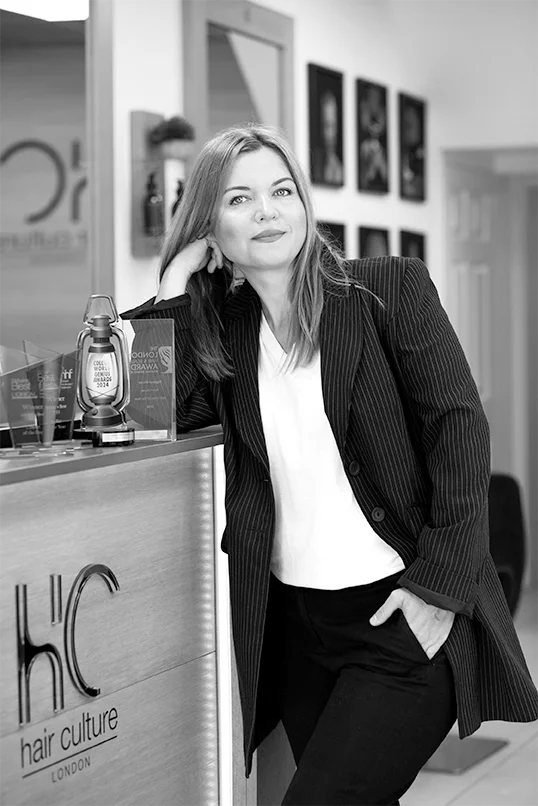
Stay Connected
Be the First to Know – Subscribe to Our Newsletter
Stay ahead of the latest hair trends, expert tips, and exclusive salon offers by subscribing to our Hair Culture London newsletter. Whether you’re looking for professional advice on colour maintenance, early access to promotions, or expert styling tips, our newsletter delivers everything you need straight to your inbox.
Why Subscribe?
Signing up is easy! Simply enter your email address below and click subscribe to start receiving updates tailored to your hair care needs.
Join our community and let us help you achieve and maintain beautiful, healthy hair. Don’t miss out—subscribe today and take your hair care to the next level!
